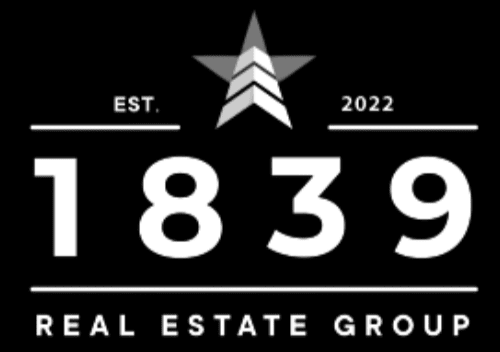Unlocking Opportunities: Exploring the Top Areas for Commercial Development in Texas
Commercial Real Estate Overview
Introduction to Commercial Real Estate
Commercial real estate is a significant sector in Texas, encompassing various types of properties such as office buildings, retail spaces, industrial complexes, and multifamily housing. The state’s robust economy and diverse industries, including DFW’s financial services, Austin’s tech sector, Houston’s energy corridor, and San Antonio’s medical hub, make it a prime location for commercial development.
Investing in commercial real estate offers numerous benefits, including steady cash flow, capital appreciation, and tax advantages. The demand for commercial properties continues to grow, driven by Texas’ expanding population and thriving business environment. To make informed investment decisions, it’s essential to understand the key factors to consider when purchasing commercial land.
Importance of Land Investment
Investing in land is a strategic move for those looking to capitalize on the top areas for commercial development in Texas. Land investment provides flexibility, allowing investors to develop the property according to market demands or hold it for future appreciation. Texas’ diverse regions offer various opportunities for land investment, each with unique advantages.
According to the Texas Real Estate Research Center, there has been a notable year-over-year decrease in annual sales volume, but prices have continued to rise. This trend indicates a growing interest in land as a valuable asset. Below is a table summarizing the recent trends in land sales and prices:
| Region | Price Increase | Acres Sold Decline |
|---|---|---|
| Far West Texas | 23.6% | 74.4% |
| Statewide | 5% | – |
To maximize returns, investors should consider factors such as location, zoning laws, and future infrastructure projects. For more insights, explore our article on future infrastructure projects impacting land value in Texas.
Investing in commercial land requires careful planning and analysis. Developing a successful investment plan involves identifying prime locations, understanding market trends, and leveraging economic development zones. For guidance on creating a robust investment strategy, check out our article on how to maximize ROI from commercial land investments.
By staying informed and strategic, investors can unlock significant opportunities in Texas’ commercial real estate market. For more information on specific properties and their features, visit our section on property listings and features.
Top Areas for Development in Texas
Exploring the top areas for commercial development in Texas provides valuable insights for investors and business owners seeking prime opportunities for land investment. Texas’s diverse economy and thriving sectors offer numerous locations ideal for commercial development.
Key Locations for Commercial Development
Several regions in Texas stand out as prime locations for commercial growth. These areas have been identified for their robust economic activity and potential for high returns on investment.
- DFW (Dallas-Fort Worth) Financial Services Industry: This area is known for its booming financial services sector, offering numerous opportunities for office and mixed-use developments.
- Austin’s Tech Sector: As a tech hub, Austin provides fertile ground for commercial properties catering to tech companies and startups. For more information on investing in Austin, visit our guide on land investment opportunities in Austin.
- Houston’s Energy Corridor: Known for its concentration of energy companies, Houston’s Energy Corridor is ideal for industrial and office space development.
- San Antonio’s Medical Hub: With a strong presence of healthcare institutions, San Antonio offers opportunities for medical office buildings and related commercial properties.
Property Listings and Features
Below is a table featuring key property listings in some of these top areas for commercial development in Texas. These listings vary in size and features, providing a range of options for potential investors.
| Property Address | Area (AC) | Notable Feature |
|---|---|---|
| 1079 Cantle Ct | 2.05 | Close to DFW Financial Services |
| SW 20th St | 14.58 | Suitable for Tech Companies |
| Koonce Fork Rd | 2.29 | Near Houston’s Energy Corridor |
| 10 Lake Blvd | 8.60 | Ideal for Medical Office Buildings |
| 9101 Wilkinson Blvd | 20.15 | Large Industrial Space Potential |
| Dallas Pky & Stonebrook Pky | 2.94 | Mixed-Use Development |
These properties offer a variety of sizes and features, making them suitable for different types of commercial developments, from office spaces to industrial complexes. For more insights on identifying prime commercial land for sale, visit our article on how to identify prime commercial land for sale.
Investors should also consider the zoning laws applicable to these properties, which can significantly impact development potential. Understanding these regulations is crucial, and more information can be found in our guide on understanding zoning laws for commercial real estate.
For those interested in specific sectors such as retail, our article on retail land investment strategies in Texas provides additional strategies and considerations. Similarly, those looking into mixed-use developments can explore the benefits and best practices in our piece on the benefits of mixed-use development in urban areas.
By examining these key locations and property listings, investors and business owners can unlock significant opportunities in the Texas commercial real estate market.
Market Trends and Analysis
When evaluating the top areas for commercial development in Texas, understanding market trends is crucial. We will analyze sales volume and price trends, as well as regional variations in land sales.
Sales Volume and Price Trends
The Texas Real Estate Research Center reported noticeable changes in sales volume and prices for commercial land. Despite a 44.6% year-over-year decrease in annual sales volume in the fourth quarter of 2023, prices continued to rise, increasing by 5% to $4,670 per acre statewide from year-end 2022 through year-end 2023.
| Metric | Q4 2022 | Q4 2023 | Year-over-Year Change |
|---|---|---|---|
| Annual Sales Volume (acres) | 1,000,000 | 555,400 | -44.6% |
| Quarter-Only Volume (acres) | 250,000 | 213,500 | -14.7% |
| Price per Acre | $4,448 | $4,670 | +5% |
These figures suggest that while there is a decline in the number of transactions, the value of land remains strong. This could be due to the limited availability of prime land and ongoing demand for high-value development opportunities.
Regional Variations in Land Sales
Across Texas’ seven regions, land prices generally increased, with some regions experiencing significant jumps. For instance, Region 2 (Far West Texas) saw a 23.6% increase in prices. However, all regions noted a decline in total acres sold, indicating a decrease in demand.
| Region | Price Increase | Acres Sold Decline |
|---|---|---|
| Region 1 (North Texas) | +5.2% | -30.0% |
| Region 2 (Far West Texas) | +23.6% | -50.0% |
| Region 3 (West Texas) | +8.0% | -74.4% |
| Region 4 (Central Texas) | +3.5% | -40.0% |
| Region 5 (East Texas) | +4.1% | -35.0% |
| Region 6 (Gulf Coast) | +6.5% | -25.0% |
| Region 7 (South Texas) | +7.0% | -45.0% |
Comparing land sales from 2022 to 2023 across Texas’ 33 Land Market Areas (LMAs), we observed a mix of price gains and losses. While the quarterly median price increased by 4% overall, 11 LMAs had falling prices, and only one showed a statistically verifiable trend. Every LMA, except for Canadian Breaks (LMA 5), experienced annualized declines in sales volumes.
The Texas Real Estate Research Center also noted that tighter financial conditions and uncertainty about future economic and financial conditions continued to subdue activity in Texas rural land markets through the first quarter of 2024. This information is crucial for investors considering land investment opportunities in Austin and other areas.
For more detailed insights on regional variations, you may want to explore our articles on market trends for commercial land in Austin and future infrastructure projects impacting land value in Texas.
Investment Strategies and Considerations
Developing a Successful Investment Plan
Developing a successful investment plan is essential for investors and business owners looking to purchase land and commercial properties for development in Texas. We at 1839 Real Estate Group have a proven track record of assisting both developers and business owners in Texas, possessing an innate understanding of their unique needs and challenges. Our personalized approach tailors our services to align with the goals of each client.
To begin, it’s crucial to leverage platforms like LoopNet, which currently shows 100,000 land listings for sale, making it the leading online commercial real estate (CRE) marketplace. With approximately 1,000 new properties added each day, LoopNet attracts more brokers and owners to advertise their properties and businesses compared to any other platform. This extensive listing base provides a wealth of options for identifying prime commercial land for sale.
Here are key steps in developing a successful investment plan:
- Research and Analysis: Conduct thorough market research in top areas for commercial development in Texas such as Austin, Houston, Dallas-Fort Worth (DFW), and San Antonio.
- Budgeting and Financing: Determine your budget and explore financing options. Working with a financial advisor can help create a robust financial plan.
- Location Selection: Identify strategic locations that align with your investment goals. Consider economic growth, infrastructure development, and market demand.
- Risk Assessment: Analyze potential risks and develop mitigation strategies. This includes understanding zoning laws and market volatility.
- Professional Consultation: Engage with real estate professionals who specialize in commercial development. Their expertise can provide valuable insights and guidance.
For more details on how to identify prime commercial land, check out our guide on how to identify prime commercial land for sale.
Factors Influencing Land Development Opportunities
Several factors influence land development opportunities in Texas, making it a significant sector for commercial real estate. Key areas such as DFW’s financial services industry, Austin’s tech sector, Houston’s energy corridor, and San Antonio’s medical hub play major roles in shaping the commercial real estate market.
| Area | Industry | Key Factors |
|---|---|---|
| DFW | Financial Services | Economic growth, corporate headquarters |
| Austin | Tech Sector | Innovation hubs, talent pool |
| Houston | Energy Corridor | Oil and gas, renewable energy projects |
| San Antonio | Medical Hub | Healthcare facilities, research institutions |
Understanding these factors can help investors make informed decisions. Here are some critical considerations:
- Economic Drivers: Evaluate the economic drivers of each region. For instance, Austin’s booming tech sector attracts numerous startups and established companies, creating high demand for commercial spaces.
- Infrastructure Development: Future infrastructure projects can significantly impact land values. Keeping an eye on upcoming developments can provide insights into potential growth areas. Learn more about future infrastructure projects impacting land value in Texas.
- Zoning Laws: Understanding local zoning laws and regulations is crucial. These laws can affect the type of development allowed on a property. For more information, refer to our article on understanding zoning laws for commercial real estate.
- Market Trends: Stay updated on market trends and sales volumes. Analyzing these trends can help predict future opportunities. Check out our analysis on market trends for commercial land in Austin.
By considering these factors and developing a comprehensive investment plan, we can unlock numerous opportunities in top areas for commercial development in Texas, ensuring successful and profitable investments. For further reading, explore our case studies on successful commercial land investments.




